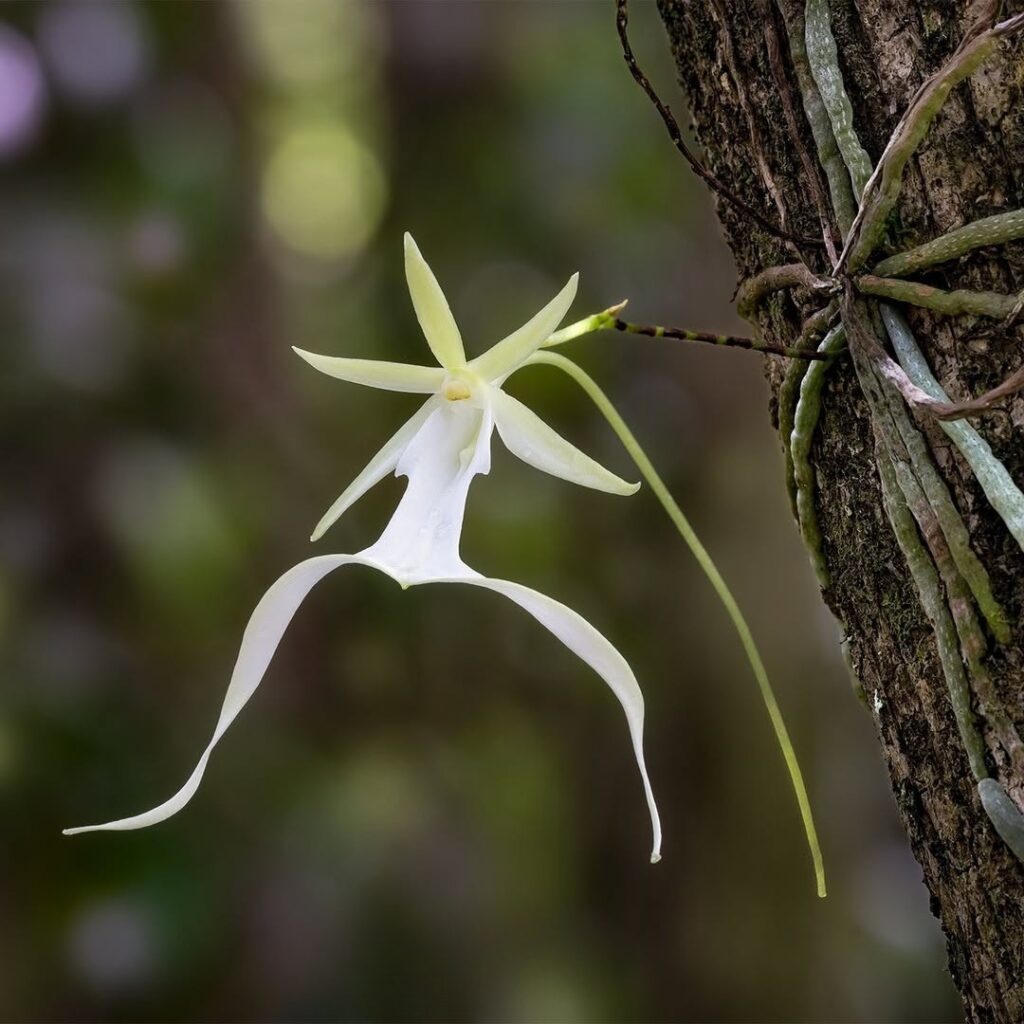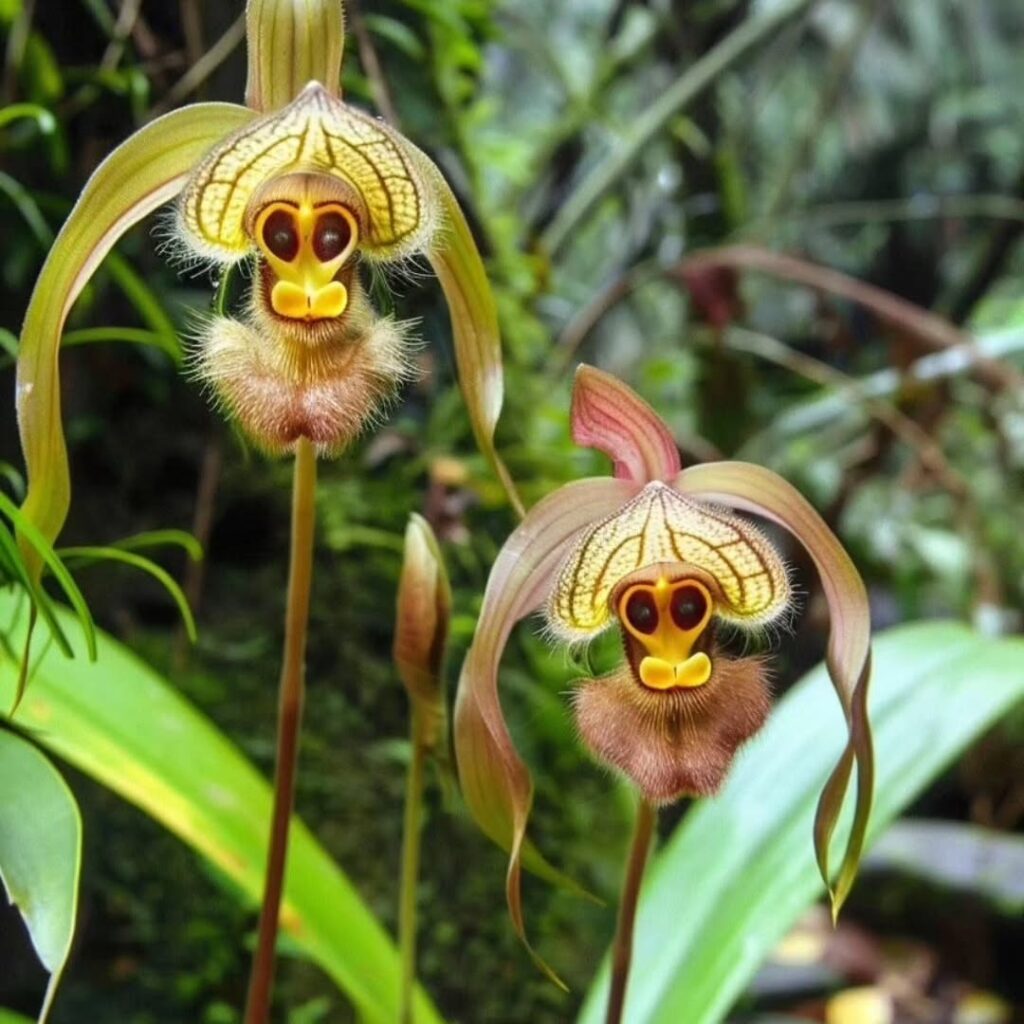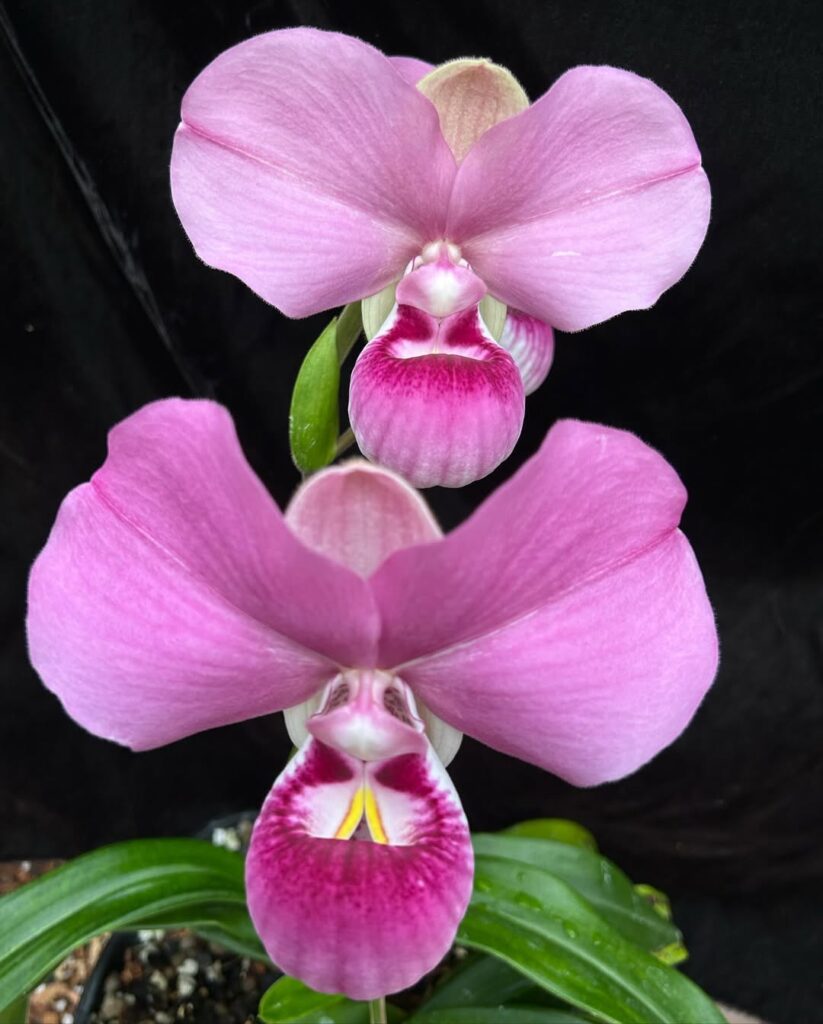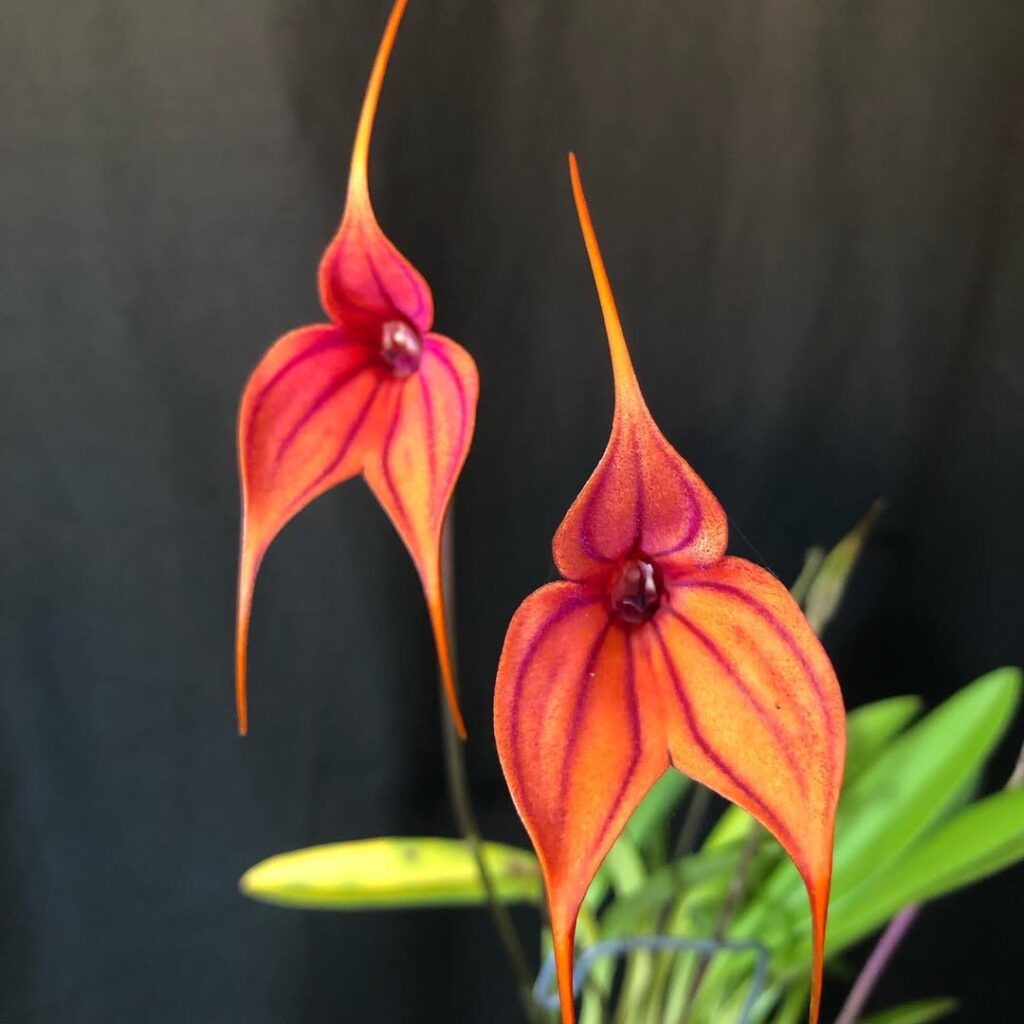Out of 25,000 known orchid species worldwide, less than 1% are considered truly exotic, with some specimens fetching prices over $100,000. You’ll find these botanical treasures thriving in unexpected places, from the mist-shrouded canopies of Borneo to the shadowy swamps of Florida. Whether you’re fascinated by the Ghost Orchid‘s ethereal dance or intrigued by the Monkey Face Orchid‘s uncanny resemblance to our primate cousins, there’s an extraordinary world of rare species waiting to reveal their secrets.
Contents
The Ghost Orchid: Nature’s Ethereal Marvel

While many orchids catch your eye with vibrant colors, the Ghost Orchid captivates through its ethereal, floating appearance. You’ll find this rare beauty, Dendrophylax lindenii, growing in Florida’s swamps and Cuba’s forests, where it attaches to tree bark without any leaves.
When you spot a Ghost Orchid, you’re witnessing something special – its white flowers seem to float in mid-air, suspended by nearly invisible roots. The blooms, measuring up to 4.7 inches across, appear between June and August. You’ll need patience to see one, as they’re endangered and only bloom for three weeks annually.
Monkey Face Orchids: Evolution’s Playful Design

The remarkable Dracula simia, commonly known as the Monkey Face Orchid, showcases nature’s whimsical side with its uncanny resemblance to a tiny primate’s face. You’ll find this rare species growing at elevations between 3,000 and 6,000 feet in Ecuador’s cloud forests, where it thrives in cool, misty conditions.
The orchid’s center features rusty-brown “fur” surrounded by dark, round eyes and fuzzy white eyebrows. Its distinctive reddish-purple petals form the monkey’s face, while a tuft of orange hair completes the simian appearance. When you’re cultivating this orchid, you’ll need to maintain temperatures between 60-80°F and humidity levels above 80%.
Rare Species in Remote Cloud Forests
Deep within South America’s cloud forests, you’ll discover some of Earth’s rarest orchid species thriving in remote, mist-shrouded valleys. These elusive plants grow at elevations between 3,000 and 8,000 feet, where daily temperatures fluctuate from 55°F to 75°F.
You’ll find the critically endangered Kovachii orchid, with its striking 6-inch purple blooms, clinging to limestone cliffs in Peru. The miniature Masdevallia orchids, barely reaching 1 inch across, carpet moss-covered tree branches in Colombia’s foggy peaks.

To spot these botanical treasures, you’ll need to trek during the dry season, from May to October, when the cloud cover briefly lifts.

Preserving Exotic Orchids: Conservation Efforts Worldwide
Growing awareness of these rare cloud forest species has sparked conservation movements across multiple continents. You’ll find dedicated botanists establishing seed banks in Thailand, Peru, and Madagascar, where they’re preserving over 2,000 endangered orchid varieties.
To protect these delicate plants, you need to understand their unique requirements. Organizations like the International Orchid Conservation Coalition maintain precise temperature-controlled greenhouses at 21-24°C (70-75°F), with humidity levels between 60-80%.
You can support these efforts by joining local conservation groups or participating in citizen science projects that track wild orchid populations, especially during their peak blooming seasons from March to June.
Scientific Discoveries and Botanical Breakthroughs
Recent breakthroughs in orchid research have revolutionized our understanding of these complex flowering plants. You’ll find that scientists have identified over 450 new species since 2020, including the remarkably tiny Bulbophyllum minusculum, measuring just 2.1 millimeters across.
DNA sequencing has revealed surprising connections between orchid families, and you can now trace evolutionary patterns dating back 84 million years. Researchers have also discovered unique symbiotic relationships between orchids and fungi, where you’ll see specialized root structures that form intricate underground networks.
Through advanced microscopy, you’re able to observe previously unknown pollination mechanisms that’ve changed how we cultivate these remarkable plants.
